Liz Kueneke is an artist who investigates the relationship people have with their environment through participatory mapping, a strategy that allows participants to translate their expertise of local environments into a geographical framework. For Oceanic x Ibiza, Liz has created a dress inspired by Ibiza’s coastline with local designer Vanina Lefebvre. Liz will wear the dress on July 20th at Oceanic x Ibiza and invite people to embroider directly onto it as they discuss their environmental concerns about the island.
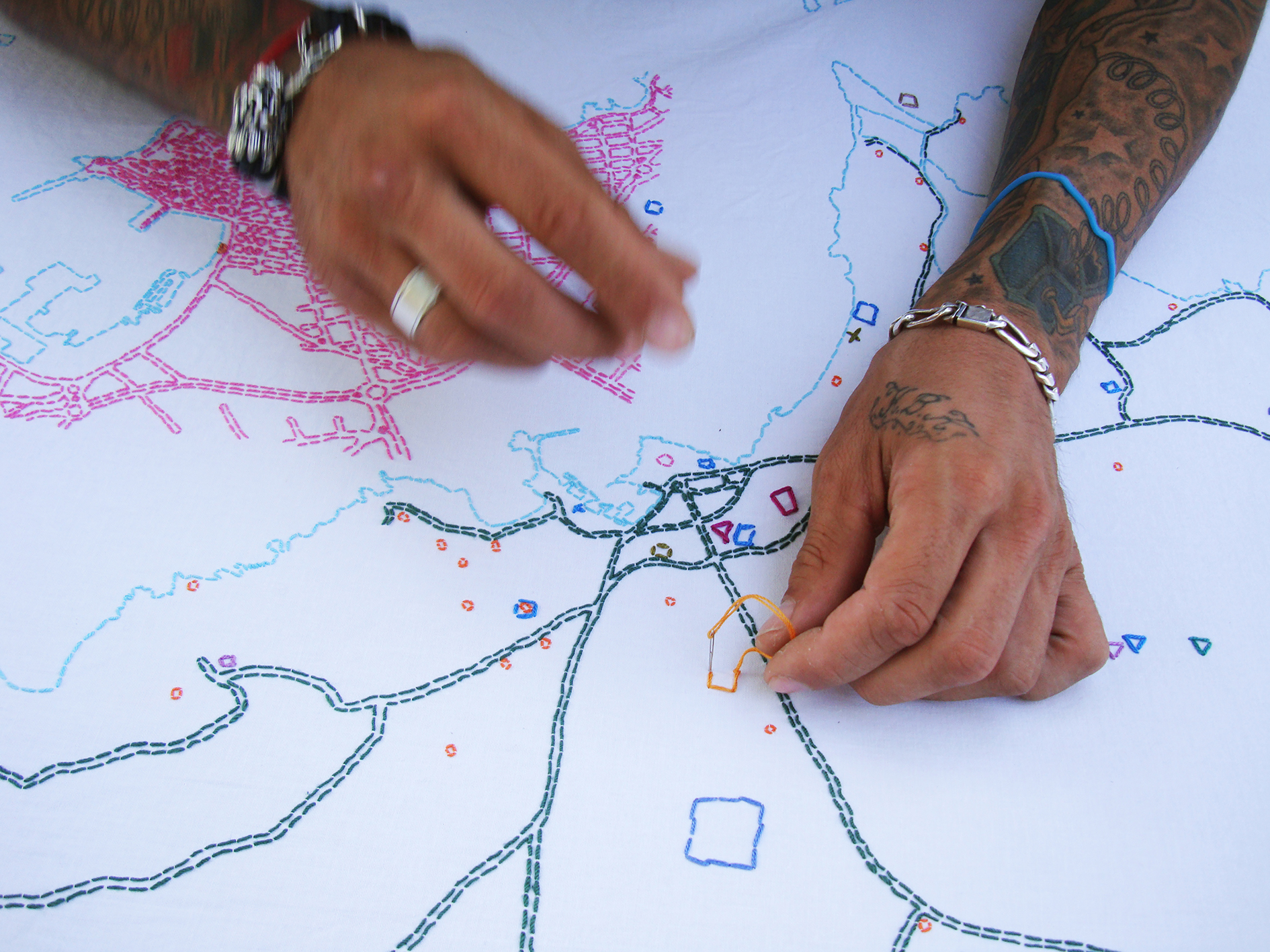
Could you tell us a little bit about your dress that will be featured at Oceanic x Ibiza?
The dress is the natural evolution of my Urban Fabric project, which consisted of public, participatory mapping interventions in many countries around the world.
I hand-embroidered maps of different cities and places and sat down in public spaces within those cities. I brought a portable embroidery table to have passersby mark significant places for them – both positive and negative – by sewing symbols into the map with thread. Communities could plot out and visualize what was happening in their cities, and share and debate between each other whether those things were something to support or unite against.
The dress I will be wearing for Oceanic x Ibiza is the next step…I will be wearing the embroidered map of Ibiza on my body. People at the event will be able to embroider directly into the dress, commenting on different issues related to the environment on the island.
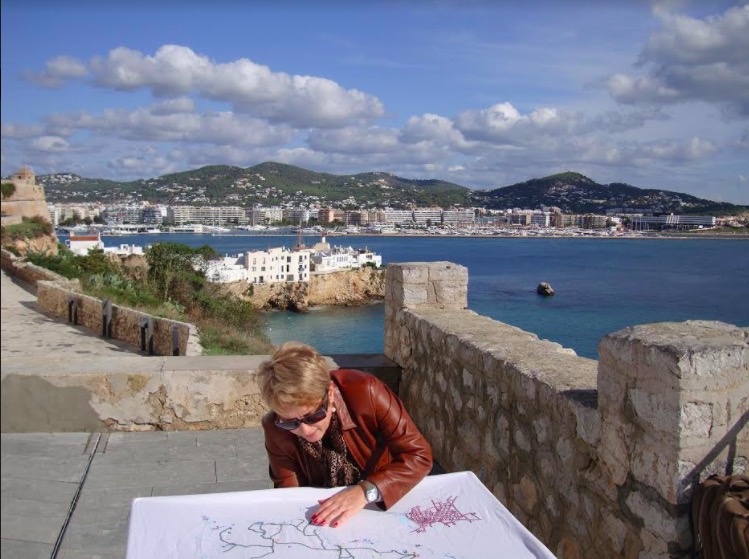
Talk us through your artistic process for the dress. How did you come up with the concept and how did you bring it to life?
The “Ibiza Dress” is a collaboration with an incredibly talented local designer named Vanina Lefebvre. We met about six years ago when she participated in my Urban Fabric Ibiza project and since then we have become mutual admirers of each other’s work. She is a seamstress of great skill who has worked for top designers in Paris and New York, and who uses recycled materials to make gorgeous, sustainable, custom clothing in Ibiza.
This winter, we decided to co-create this new “tool” for my participatory mapping. She has designed and is elaborating the dress overall, while I am embroidering the map of the island onto the bottom portion of the dress. The embroidery will take approximately 200 hours (we should be finished just in time for the event!). The entire coastline of the island will serve as the border of the dress, with my torso emerging from the center of the island. The dress is an embroiderer’s dream, Vanina is adding stylish – yet practical – details to the dress, such as epaulettes which double as pin cushions to store the needles which participants will use, and a pouch for the sewing scissors in the neckline.
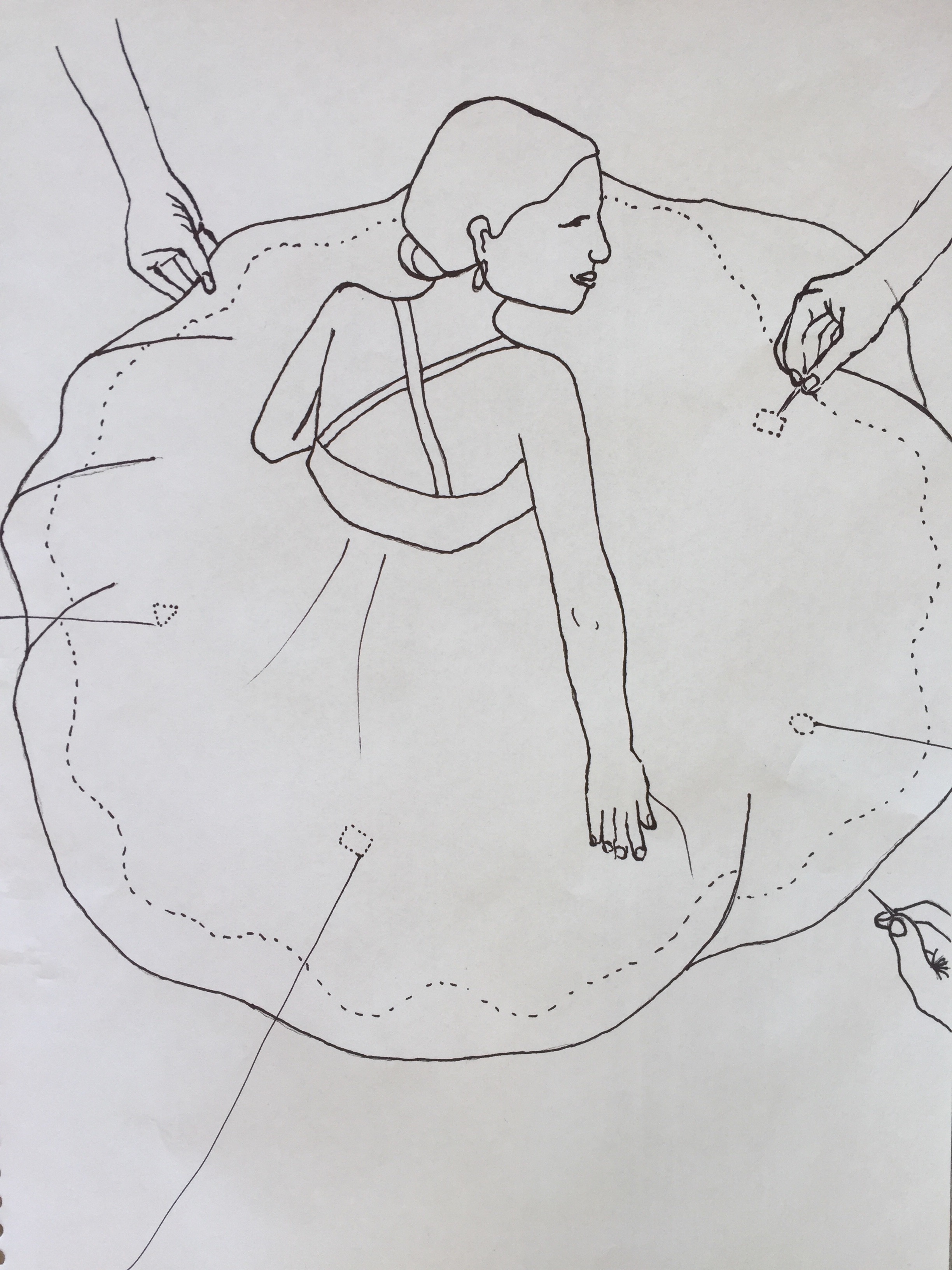
How long have you been an artist? How would you describe your work and your artistic background?
I don’t think there was a moment when I became an artist, it is just something that I have always done. I received a Master of Fine Arts in Los Angeles in 2001 and since then, my work has been mostly centered on investigating the relationships that people have with their environment. I do this through participatory mapping activities and public interventions. I am fascinated by the human experience, the different layers of meaning attached to the public and private spaces that we inhabit, and how the changes taking place in our world are affecting our lives.
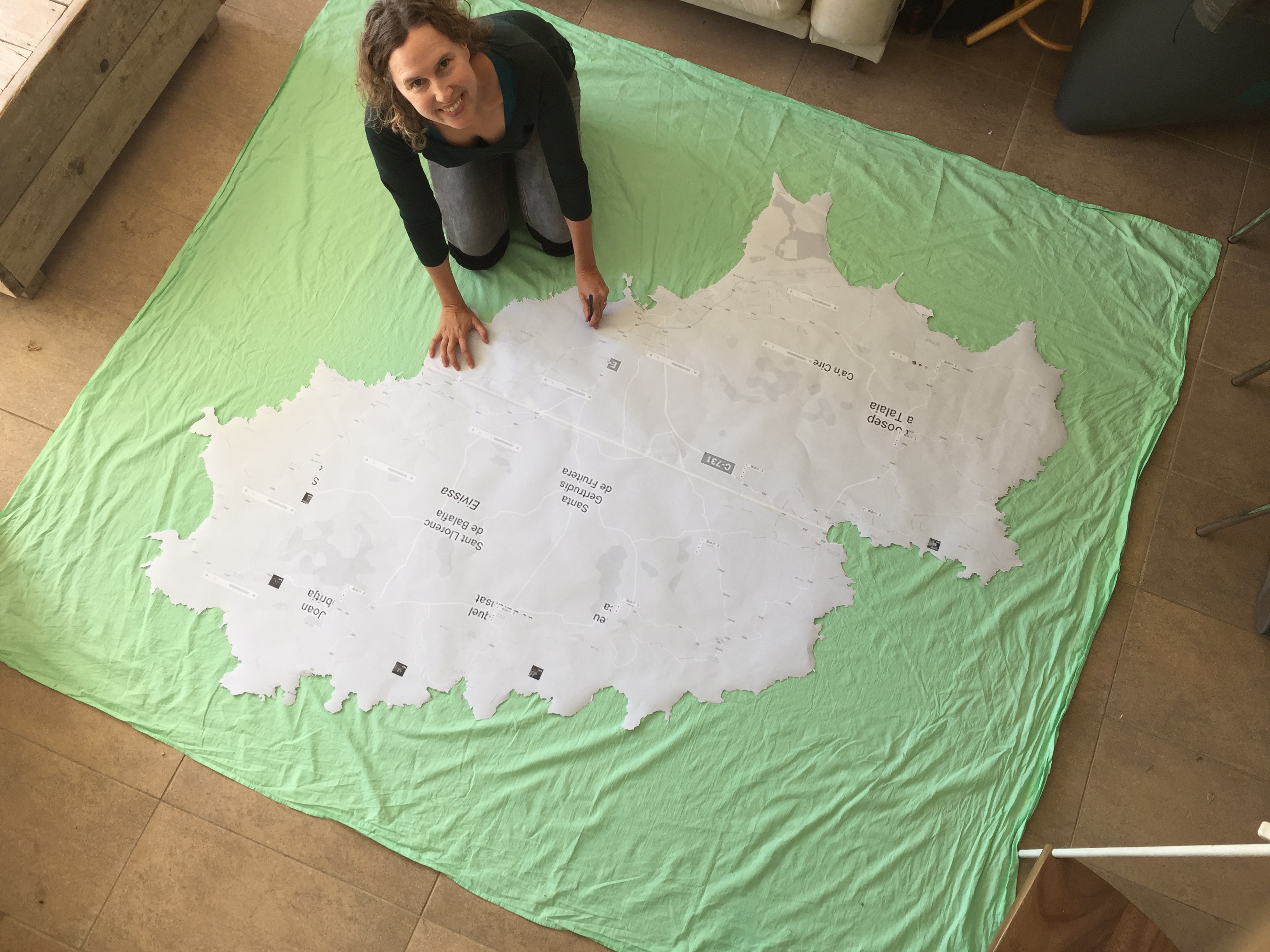
How do you find inspiration, how long does a piece take, and when do you determine it’s complete? Where is your work displayed?
Generally, I am inspired by seeing how people live differently depending on their surroundings, so walking around a new city is a fascinating adventure for me.
Each city map takes approximately 100 hours to embroider at home and then I usually spend a few weeks in each place, which is the participation phase with the public. After this, I display the work in a gallery in that city so I can share all the results with participants and locals. The exhibitions include the map itself, books of anecdotes, video interviews with participants, photographs, digital maps, and other elements.
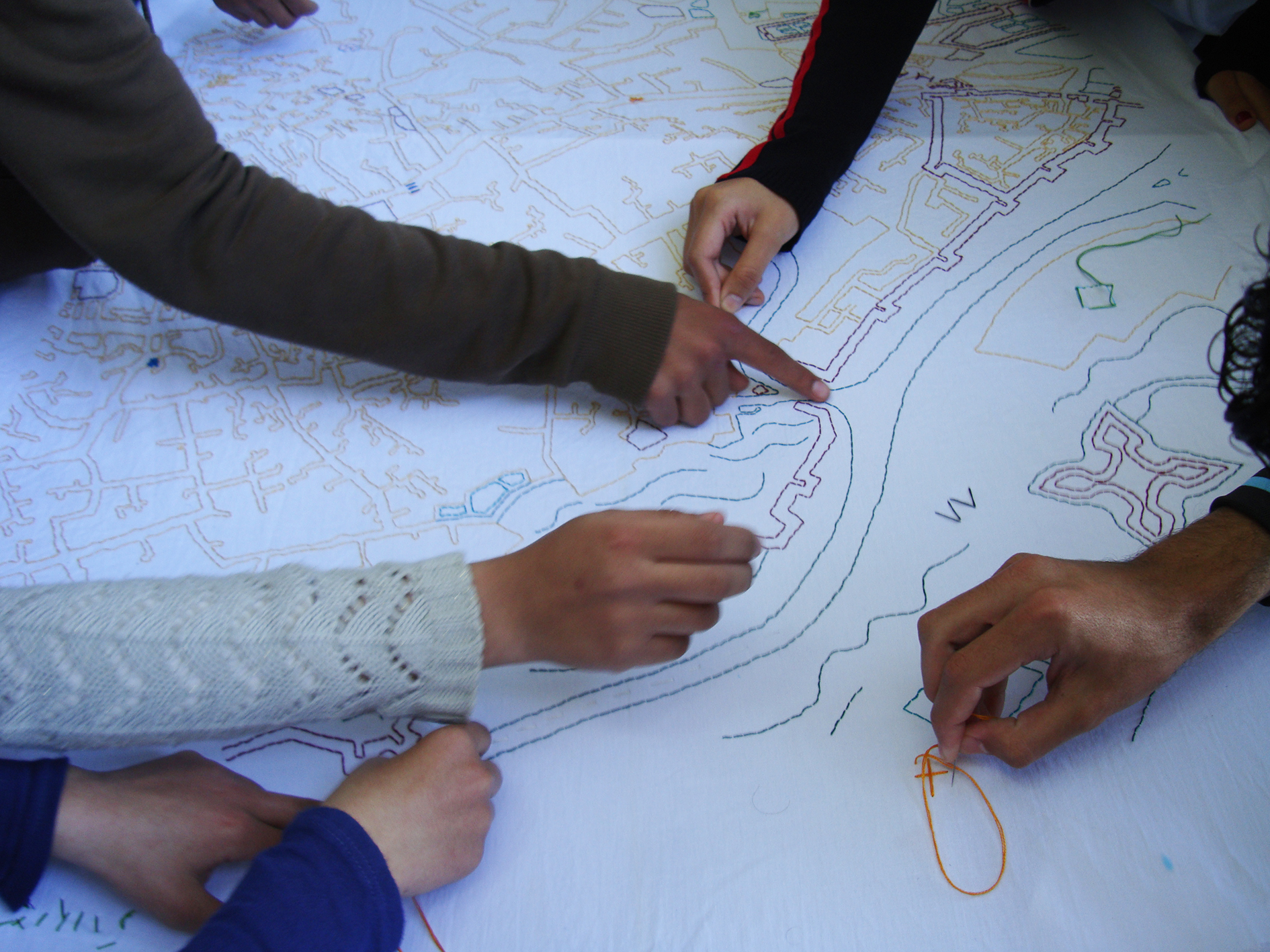
What draws you to the oceans, specifically?
The first years of my life were spent in northern California and for me, some of my most treasured childhood memories were of “tide pooling” – walking around on the rocks at the edge of the ocean and discovering the sea anemones, crabs, fish, and other tiny creatures living in the small pools of water. I think it’s sometimes easy to look at the surface of an ocean and to think of it as just water, rather than an entire other world full of spectacular beings who are living out their lives. For me, “tide pooling” and snorkeling opened me up to the magical world living just below the surface. I have been exposed to the damage we are inflicting upon the oceans and have seen the quality of the marine life suffer over the years.
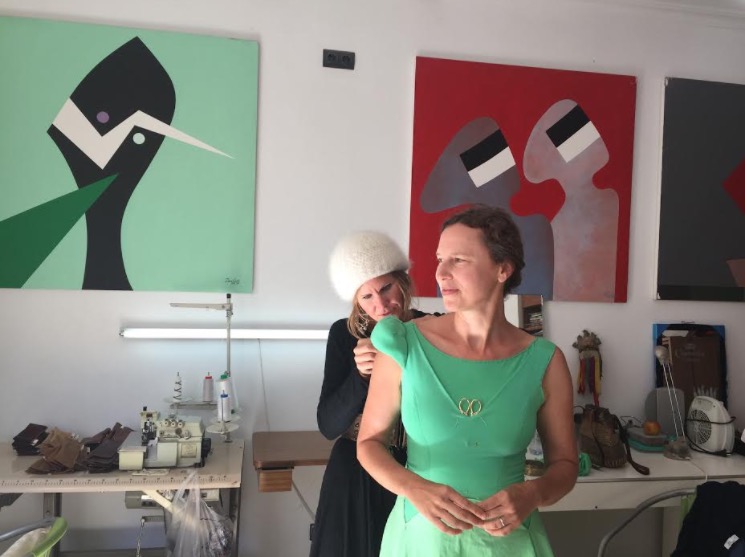
What reaction would you like people to have to your work?
I would love for people to interact with this new “Ibiza Dress” and to be delighted, not to think about whether or not it is art. I just love creating playful situations in which important information can be gleaned. My intention is for people to have direct, personal responses and to want to share their knowledge by participating.I would be thrilled if people participate and see how many others here on the island are also interested in helping Ibiza reach a more sustainable future- especially if they can meet each other and create new collaborations in the act of embroidering.
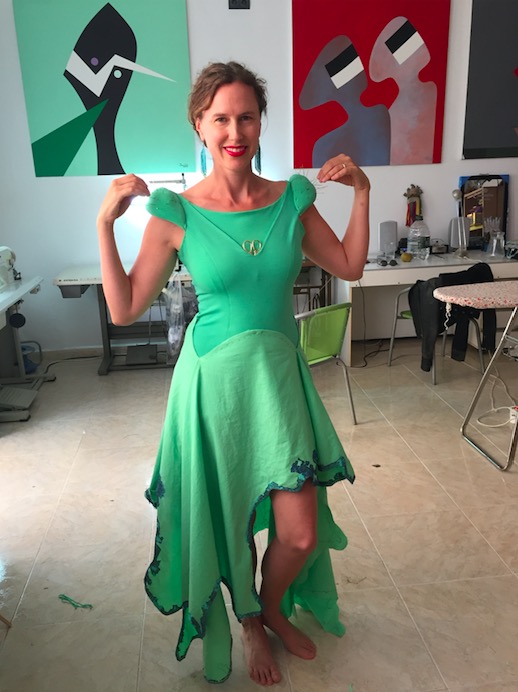
See more of Liz’s work on her website and learn more about the project on this Facebook page.